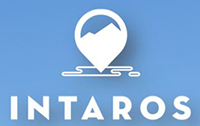
The University of Silesia (U Slaski) is the one of the largest institutions of higher education in Europe. US has 12 faculties, i.a. the Faculty of Earth Science, where has been conducting Earth science research in the field of polar science for a few decades. The overall aim of research polar programme of U Slaski is identification and understanding of changes in the Arctic cryosphere system as indicators of climate warming. The Faculty of Earth Sciences at U Slaski is also the leader of the Centre for Polar Studies with status of Leading National Research Centre in Earth Sciences (2014-2018). Centre conducts advanced research aimed at improving the understanding of polar environments and their transformation related to climate change and educational centre for specialized polar studies (Interdisciplinary Polar Studies). Moreover, U Slaski heads the Polish Polar Consortium – cooperation between 18 Polish scientific institutions. The mission of Consortium is to build a framework for an effective cooperation of the Polish polar research community.
Role in the project
U Slaski contributes WP2 in acquiring, processing and delivery of variety of high quality ground-based as well as remote sensing data related to Svalbard glaciation. Long term series of glaciers’ front positions on southern Spitsbergen and glaciers’ velocity are available thanks to the combined analysis of satellite/airborne images with results of terrestrial investigations. Based on the data, the calving rate and ice supply from reference tidewater glaciers to the ocean will be estimated. Glaciers’ mass balance calculations and numerical modelling will exploit the meteorological inputs (c. 10 years series from AWSs dispersed on glaciers around Hornsund), whereas ground truth results will be used to calibration and validation. The data pointed out above allow to investigate the evolution of glacial systems under recent environmental changes, to define couplings between different polar components and are valuable sources for calibration/validation of numerical modeling. U Slaski will also provide material for dissemination and education in WP7.
